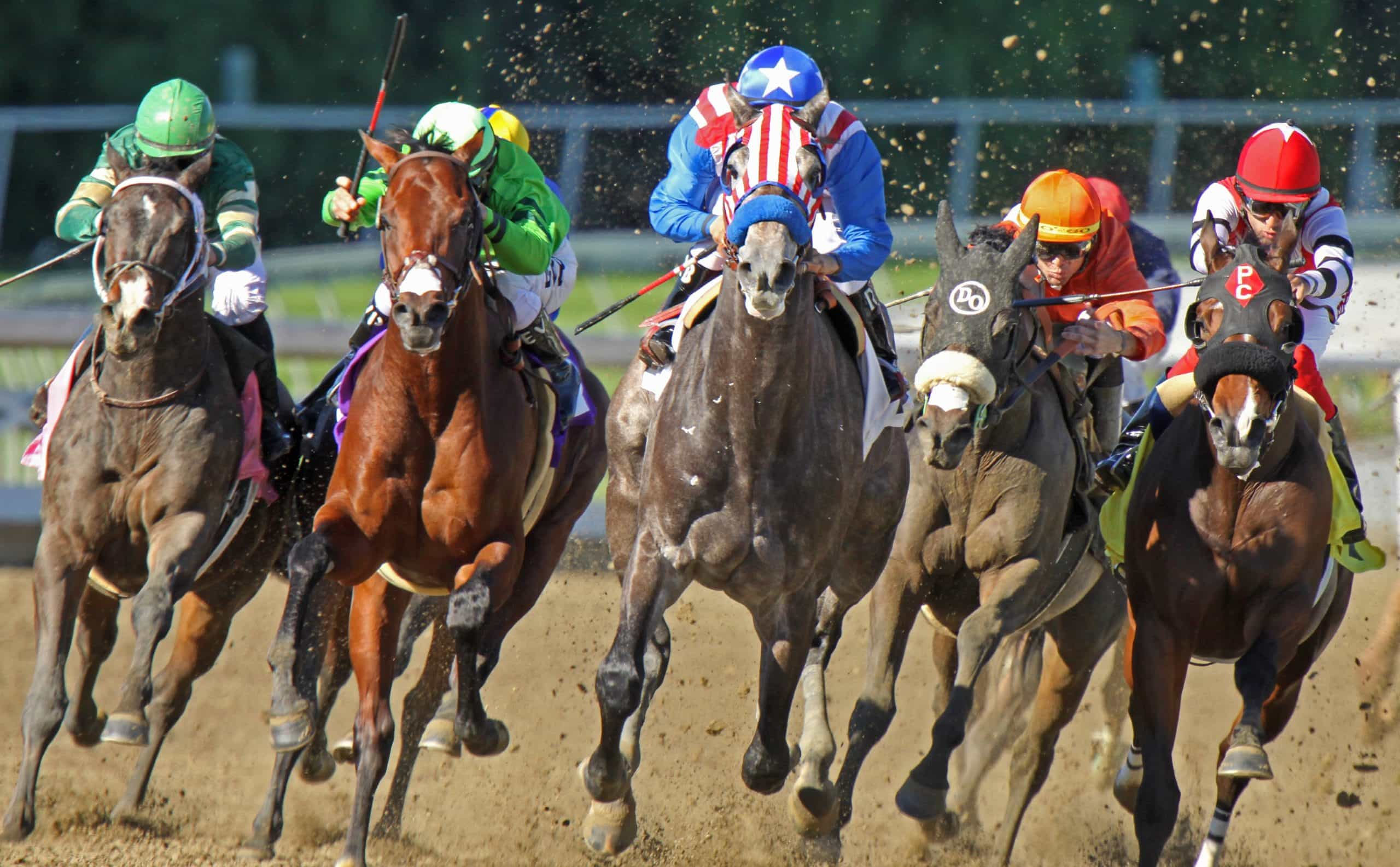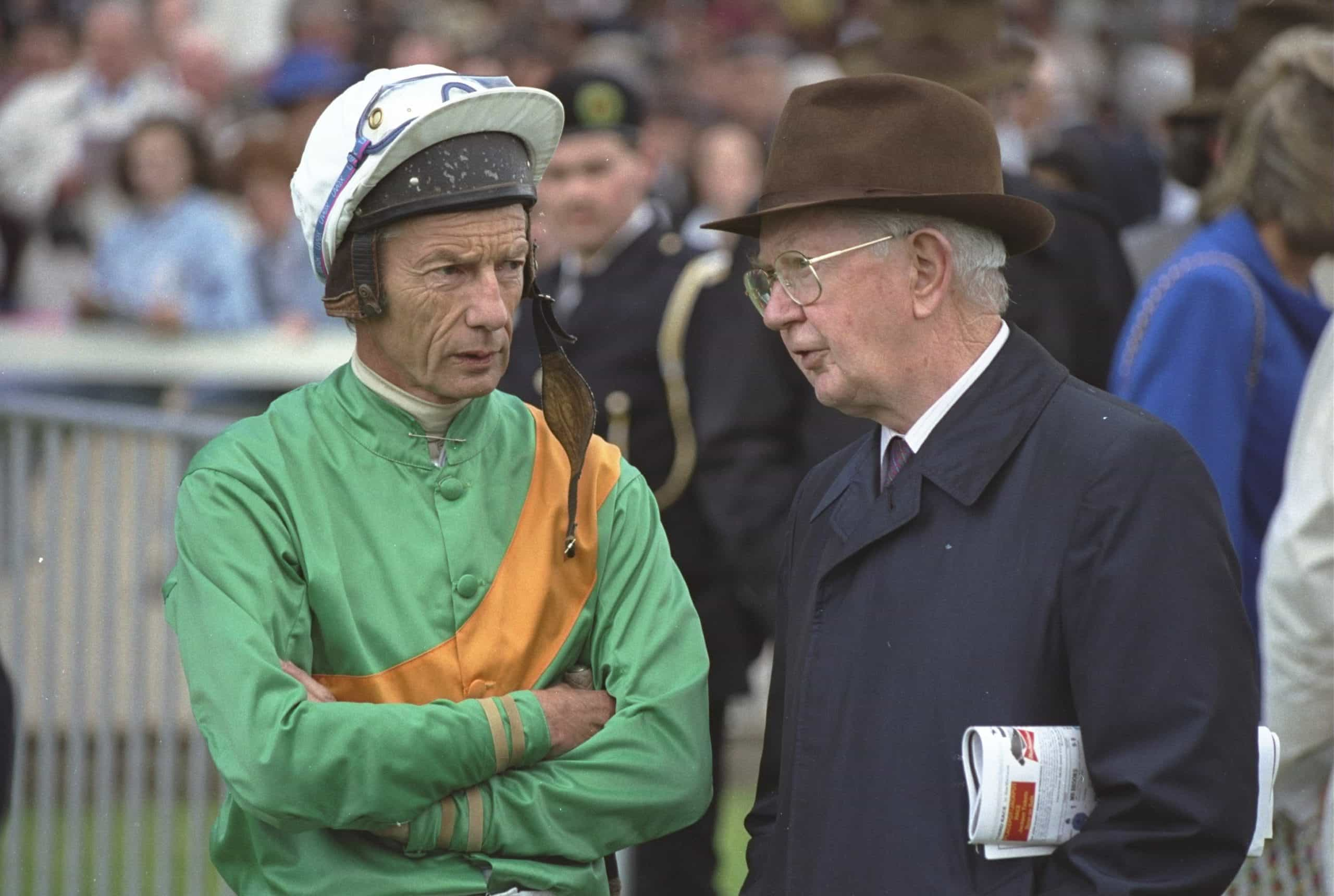
On the day 68,000 horseracing fans packed into California’s Hollywood Park. The action was also nationally televised as a four-hour live NBC broadcast. Amongst the six other winners legendary French jockey Yves Saint-Martin scored for his home country aboard the Aga Khan’s 53/1 shot Lashkari.
A little-known English trainer called John Gosden, based at Santa Anita also hit the scoresheet. For him, the former British-trained mare Royal Heroine, owned by Robert Sangster, landed the Breeders’ Cup Mile.
Breeders’ Cup 1984 and Before
But the history of the Breeders’ Cup goes back further than 1984. The event was the brainchild of John R. Gaines, a pet-foot heir who purchased half of Whitney Farm, a renowned breeding operation, in 1965.
By the mid-1970s Gaines had acquired the entire Whitney operation. It was renamed Gainesway Farm and was relocated to Paris Pike in Lexington, Kentucky.
Gaines floated the idea for a year-end culminating championship on the eve of the 1982 Kentucky Derby. He had the support of prominent thoroughbred breeders from central Kentucky, but the concept initially faced much skepticism.

American Pharoah, winner of the 2015 Breeders’ Cup Classic at Keeneland Racecourse, was the first horse to claim the ‘Grand Slam of Thoroughbred Racing’. ©GettyImage
A company, Breeders’ Cup Limited, was formed later in 1982, and on November 10, 1984, the gates crashed open on the first Breeders’ Cup race. On that day Chief’s Crown landed the opening Breeders’ Cup contest – the Breeders’ Cup Juvenile.
Another race on the card, the Juvenile Fillies, was awarded to Outstandingly after the stewards disqualified first-past-the-post Fran’s Valentine.
In over 360 subsequent Breeders’ Cup races since only one other horse has been demoted from first. That distinction goes to She’s A Tiger who was disqualified after bumping with Ria Antonia in the very same Juvenile Fillies contest 29 years later.
Breeders’ Cup History
During the decades which have passed since that inaugural Breeders’ Cup meeting, horse racing has changed a lot. However, the seven races that made up that very first meeting are still run today and remain the backbone of the series.
In 2007 additional Breeders’ Cup races saw the meeting extended to a two-day festival. The new races also saw purse-money elevated to $25 million.
Two races have since come and gone. The Breeders’ Cup Marathon was introduced in 2008 and discontinued in 2013. Likewise, the Breeders’ Cup Juvenile Sprint was run just twice – 2011 and 2012.
Now the Breeders’ Cup consists of 14 races, all with a minimum $1 million purse. The most recent addition is the Breeders’ Cup Juvenile Turf Sprint. It was first run in 2018.
A Travelling Show
An intriguing part of Breeders’ Cup history is the various tracks that have staged the championship. From its inception, the concept was always to rotate Breeders’ Cup host venues.
Hollywood Park, who set the wheels in motion in 1984, staged the race for the second time in 1987 and again in 1997. Hollywood Park was demolished in 2013 and is now the SoFi Stadium – home to both the LA Rams and LA Chargers.
All other venues which have hosted the Breeders’ Cup continue to race today. Sadly, Chicago’s Arlington Park, the 2002 host, is unlikely to race beyond 2021 as it is earmarked for redevelopment.
Ten other North American tracks have staged at least one Breeders’ Cup meeting. Santa Anita has been the venue 10 times; Churchill Downs has hosted nine gatherings. Just once has a Breeders’ Cup taken place outside of America. That was 1997 when Toronto’s Woodbine Racetrack was chosen as host.
Only in 2009 did a venue, Santa Anita, stage the Breeders’ Cup meeting for consecutive years. 2010 and 2011 saw Churchill Downs also go back-to-back, as did Santa Anita again in 2013 and 2014.
It has not happened since and cannot happen again until at least 2023. A venue is yet to be chosen for that year – Keenland is confirmed as the host venue in 2022.
Indelible Memories
Nearly four decades of Breeder’s Cup history has thrown up countless indelible memories. It is impossible to identify one defining moment, but towards the top of most fans’ list of finest achievements is American Pharoah’s triumph in the 2015 Breeders’ Cup Classic.
In winning all three legs of that year’s Triple Crown and the $5 million Breeders’ Cup Classic American Pharoah became the first winner of the ‘Grand Slam of Thoroughbred Racing’.
Goldikova is another horse who earned legendary status. The French-trained mare won the Breeders Cup Mile three times between 2008 and 2010. She is the only horse to win the same Breeders’ Cup race on three occasions.
Arazi the Airplane
France has only enjoyed eight victories in Breeders’ Cup races – amongst those is the unforgettable Arazi. Named after an aeronautical navigational checkpoint in the Arizona desert, anyone who witnessed Arazi land the 1991 Breeders’ Cup Juvenile was convinced they had seen a flying machine!
Drawn 11 in a 14-runner field Arazi sat over a dozen lengths behind the leaders during the early stages of the mile contest. His prospects looked hopeless but from the halfway stage he cut through the field like a proverbial hot knife through butter.
Passing rivals on their inside and outer, Arazi assumed the lead before turning for home and pulled well clear of the field to win in breathtaking fashion.
It was an unforgettable race and anyone who witnessed the winner’s heroics was left speechless. This included Sheikh Mohammed who later paid $9 million for a half share in what was immediately labeled a ‘wonder horse’.
Piggott’s Royal Performance
The history of the Breeders’ Cup is not all about the equine stars, sometimes their jockeys leave fans spellbound. That was the case in 1990 when Royal Academy won the Breeders’ Cup Mile at Belmont Park.
A lightly raced horse trained by the renowned Irishman Vincent O’Brien, Royal Academy, was partnered by the legendary Lester Piggott. At the time Piggott, an 11-time champion jockey, was 54. He had retired in 1985 and had spent a year in jail following a conviction for tax evasion in October 1987.
In early October 1990, Piggott shocked the racing world by announcing his return from retirement. Just 10 days later the grandfather masterfully overcame a wide draw aboard Royal Academy in the valuable turf contest to pass six rivals on the short homestretch to hit the wire in front by a neck.
Dayjur from the Shadows
In the same year, another European horse put up an amazing performance – albeit this time in defeat. His name was Dayjur and he arrived in New York’s Belmont Park as the undisputed star of European sprinting.
During a remarkable season, Dayjur had already landed four Group 1 contests: The King’s Stand Stakes, the Nunthorpe, Ladbrokes Sprint Cup, and the Prix de l’Abbaye in Longchamp, France. But could he reproduce that form in America’s backyard where the bulk of horse racing is over sprint trips?
Furthermore, could Dayjur really compete with home champion Safely Kept? She was a superstar filly who had won eight of her nine starts as a three-year-old and was a perfect six-from-six heading into the 1990 Breeders’ Cup Sprint.
In the event Safely Kept bounced out of the starting gates and assumed an early lead. Meanwhile, Dayjur emerged last and from a wide draw was immediately hurried along. Entering the homestretch Dayjur had passed every rival and went head-to-head with Safely Kept.
Pulling well clear of the field a protracted duel between the two main protagonists then took place. It continued down the length of the finishing stretch until, close to home, Dayjur began to forge ahead.
However, yards from the line disaster struck as Dayjur, without any warning, jumped a shadow. Jockey Willie Carson managed to stay aboard his mount, but the immediate loss of momentum allowed Safely Kept to cross the line ahead when second-place looked inevitable.



